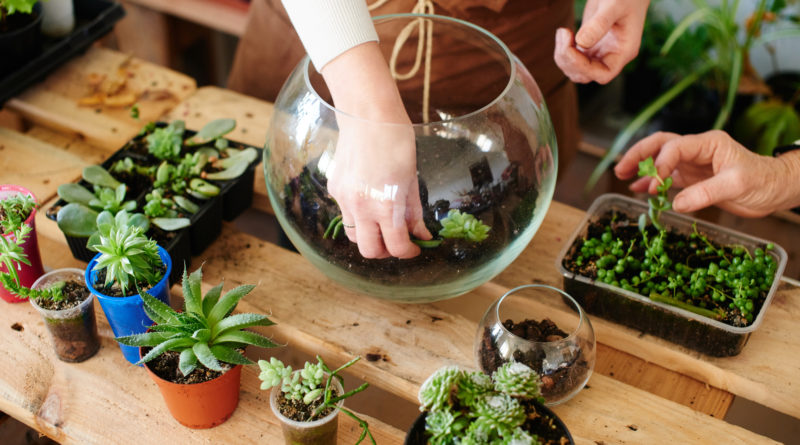Terrariums: How to Care for a Terrarium
617 total views, 1 views today
Indoor plants can help you be mindful and responsible while reducing anxiety, boosting productivity, and sharpening your focus. For some, growing plants can be an intense biological research venture and care project or a living, collaborative, decorative, or aesthetic arrangement. Maintaining care of a terrarium is a simple, fascinating method of raising slow-growing, low-care, modestly sized plants that thrive in indirect light. Here’s a quick guide on how to get the best results starting on your own from scratch.
Research
Plant biology books for intense research hobbyists depict beautiful and intricate terrarium plants. If that sounds a bit too intense, then start online, looking for the kinds of plants you think look best and fit your nurturing style. Use photos to see what the different species look like when they mature, then decide on a few for your terrarium. Find out how long they live and how much water, light, and humidity they prefer.
Each species grown in indoor terrariums is a bit different, but due to the miniature greenhouse cycle, most terrarium plants need water rarely. Open and closed terrariums create unique, specific environments for plants where they may be more comfortable growing. A slight water cycle begins when heat, humidity, and light are allowed to pass through the glass into the tank and interact with the natural photosynthetic processes of the plant.
Some plants like their terrariums opened with less humidity, and some prefer a closed system for more humidity. Either way, most plants will grow slowly. They may also prefer indirect light and bake up in the sun, so search for plant-growing lamps or keep them out of windows. Water your plants carefully with a specialized, small watering can, or lightly water your terrarium with a spray bottle. While succulents are fascinating and are common in terrariums, they require underwatering to avoid root rot.
Preparation
A trip to a plant nursery can provide you with the small-sized gravel for a base where overflow water will collect, activated charcoal to prevent bacteria growth, and moss to help the soil absorb water. Be sure to pick up high-quality potting soil to give your plant all the best.
When you find your appropriately-sized repurposed glass jar or another stylistic glass tank, be sure to wash it thoroughly with soap and water to kill any germs. Be mindful of keeping fixtures clean and free of dust for the same reasons. A terrarium environment depends on humidity and heat to maintain its water cycle. In a dirty container, bacteria will begin to thrive alongside the plant and endanger it.
Assembly
Wash your hands before starting your assembly to keep plants safe from bacteria and prevent mold growth in your terrarium. There are no perfect measurements, but try to layer the elements in the vessel in proportion to the container and plant. The soil layer will be the thickest, at just over the size of your plant’s root ball. The gravel and moss layer should be about one-third as deep.
Begin with about an inch of gravel, then overfill the gaps with charcoal bits by about half an inch. Break up the moss and spread it over the flattened charcoal layer about an inch deep. Use your spray bottle to distill some tap water by allowing it to sit for at least 24 hours, then moisten the moss layer. Lastly, the soil layer will be the deepest. Create a thin layer of potting soil over the moss and nestle the ball of roots in the dirt. Gently pack soil around the roots until the plant is comfortably standing on its own. Water only when necessary, and enjoy!
What are your favorite terrarium plants? Share your thoughts in the comments!

